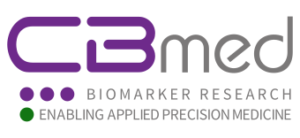Microbiome research in Graz II: current microbiome scientific papers and publications
A few weeks ago, the first part of our latest blog topic described how Graz became an international research hot spot for Microbiome. This dynamic development finds its expression in several microbiome scientific papers that have been published in the last months – these papers also demonstrate the vivid scientific work and expertise in this medical field.
These biomarkers are oral bacteria that would not be able to survive the gastric passage. Due to the PPI therapy, however, the stomach is much less acidic which favours the survival of oral and food-borne bacteria and is most likely the cause for PPI-associated oralization. In a proof-of-concept study published in “Annals of Surgical Oncology”, Horvath et al. showed that patients after subtotal gastrectomy with Billroth II reconstruction (SGB2) who also have an increased gastric pH and diminished gastric barrier, show very similar changes in the microbiome: oralization and intestinal inflammation. These findings prove that an increase in gastric pH irrespective of the cause is associated with typical microbiome changes. These novel insights may open gut microbiome as a new target for therapy to improve quality of life and general patient health in long-term survivors after SGB2 as well as long-term PPI users.
If side effects of PPI can be linked to the changes in the intestinal microbiome as described above, the microbiome might also be a key player in the reduction of PPI side effects. Horvath et al. therefore tested whether a synbiotic intervention can reduce microbiome-related side effects of long-term proton pump inhibitor use, in a pilot study published in “Scientific Reports”. This study showed that a multispecies synbiotic containing twelve strains has the potential to improve side effects of proton pump inhibitors (PPI) after three months of intervention. Improvements in gut permeability, liver biochemistry parameters and quality of life could be observed; however intestinal inflammation and microbiome composition were unchanged.
Graphical summary of the effects of PPI use on the microbiome of liver cirrhotic patients and their consequences. 1) oral bacteria (Streptococcus und Veillonella), 2) proton pump 3) proton pump inhibitor 4) cirrhotic liver 5) inflammation 6) gut permeability 7) translocation of bacterial metabolites.
[With friendly permissiven by Medicom VerlagsgmbH / GASTRO&HEPA-NEWS Year 12, Edition 4/19 Page 1]
Research in recent microbiome scientific papers
The robust composition of the microbiome during probiotic/synbiotic intervention were also observed in another study that investigated the changes in the intestinal Microbiome during a multispecies probiotic intervention in compensated cirrhosis, published in “Nutrients”. Probiotics have been used in trials to therapeutically modulate the gut microbiome and have shown beneficial effects in cirrhosis. However, their effect on the microbiome of cirrhosis patients is not fully understood yet. Horvath et al. found subtle changes in the microbiome, such as the increase in various short-chain fatty acid producers. However, the overall composition and diversity of the microbiome remained unchanged during the intervention. Given that patients who had microbiome changes in response to probiotic treatment showed a significant increase in neopterin and a significant decrease in faecal zonulin levels after intervention, which was not observed in placebo-treated patients or patients with unchanged microbiome compositions, small changes might be enough to exert beneficial effects on the patients. Most of these changes were not permanent, suggesting that ongoing administration might be necessary to achieve long-term effects in this patient cohort.
Probiotics are a potential way to influence the gut-liver-axis in cirrhosis – another topic for microbiome scientific papers. Cirrhosis is associated with quantitative and qualitative dysbiosis of the microbiome, which can be influence by a number of factors. Stadlbauer et al. published an article in “Liver International” that show that disease severity and proton pump inhibitor use impact strongest on faecal microbiome composition in liver cirrhosis. Additionally, aetiology of liver disease, nutritional status, inflammation and age could also be identified as independent factors that influence microbiome composition in liver cirrhosis. The author make the case that in chronic diseases with high morbidity, such as liver cirrhosis, precise patient metadata documentation is of utmost importance for robust and reproducible results in microbiome research. Aside from information about the disease, such as severity and aetiology, and the patients demographic, this includes detailed account of drug intake, malnutrition screenings as well as inflammatory parameters.
This is also true for dementia. Dementia is an increasing public health threat worldwide and its pathogenesis has not been fully elucidated yet. Inflammatory processes are hypothesized to play an important role as a driver for cognitive decline but the origin of inflammation is not clear. In a cross-sectional controlled pilot study on dysbiosis, gut barrier dysfunction and inflammation in dementia, published in BMC Geriatrics, dementia was associated with changes in microbiome composition including a reduction in bacteria known to produce short chain fatty acids (SCFA) and increased biomarkers of gut permeability and inflammation. This supports the concept of a disrupted gut-brain axis in dementia. Furthermore, it was shown that both malnutrition and drug intake are factors associated with microbiome composition in dementia. Increasing butyrate producing bacteria and targeting malnutrition may be promising therapeutic targets.
The Authors
Angela Horvath, Mag.rer.nat. PhD.
Assoz. Prof.in Priv.-Doz.in Dr.in med.univ. Vanessa Stadlbauer-Köllner





 CBmed
CBmed